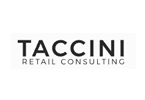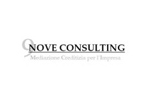With digital transformation, CRM has new potential, but most managers don’t know it.
Next-generation CRMs have new potential; their value now lies in eliminating any resistance between humans and technology, thus creating a continuous flow of data for the various stakeholders of an organization. Today, with AI, this goal is fully achievable.

Sound familiar to you?
Often, the implementation of CRMs makes a difference. Sometimes you might end up with products that, despite being extraordinary, can be implemented in ways that don’t align well with the sales flow. This can lead to a significant adoption problem and all the subsequent disadvantages of lost sales efficiency.
Trusted by the world’s fastest growing companies:




































It’s the how, not the what, that makes the difference.
It often happens that when pointing at the moon, you end up looking at the finger. The real issue is that the CRM is the final step in an organizational change process that must be made a common factor among stakeholders. It’s this step that can truly lead to the right solution and adoption by employees and salespeople. To achieve this goal, it’s crucial to first clearly identify the company’s needs and pinpoint any issues that could hinder its development. Did you know that in 62% of cases, CRM implementation failure is due to pre-existing organizational problems? That’s why, if you want to introduce a CRM, it’s important to first ensure that there are no internal issues among people and departments that could impede its usage. This, of course, needs to be carefully considered beforehand.
Analysis of Business Needs
Fully understanding the company’s operational challenges is essential to determine whether technology is the solution or if there are organizational or cultural issues that may require a different approach. Clearly identifying the underlying cause of inefficiencies is the first step towards an effective solution.
Evaluation of Company Processes
It is crucial to assess whether interdepartmental processes are optimized and if there is a risk of digitalizing entrenched inefficiencies. Each process must be carefully examined to ensure it is efficient and supports the overall business goals, avoiding the digital transformation of existing problems.
Clarity on Project Benefits
Clearly communicating the expected benefits of the project to all stakeholders is important to gain their support and involvement in the process. The benefits of the CRM must be understood and accepted by all employees to maximize adoption and effectiveness.
Identification of Potential Issues:
Anticipating and preparing to address potential obstacles during CRM implementation is essential to ensure a smooth transition and lasting success. Identifying potential risks and developing mitigation plans helps ensure that the project progresses smoothly.


